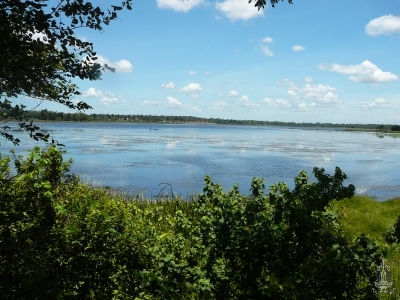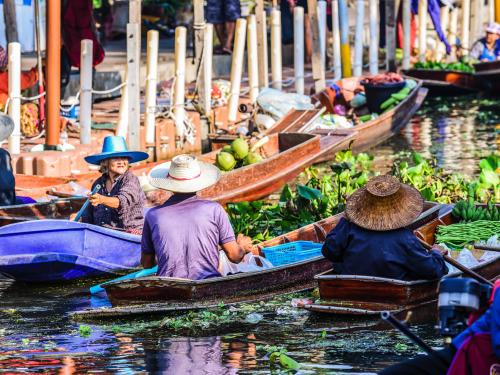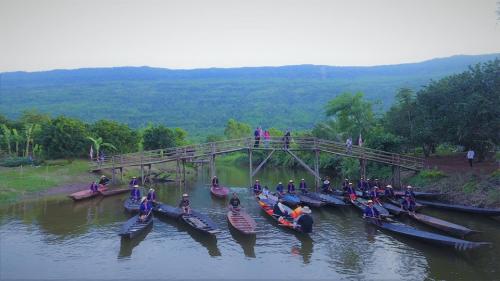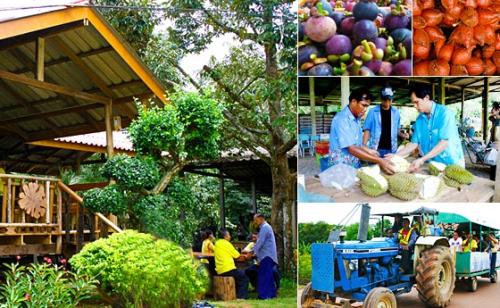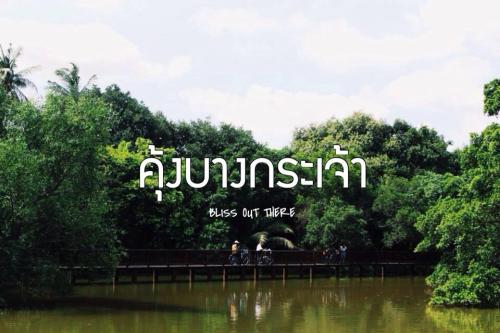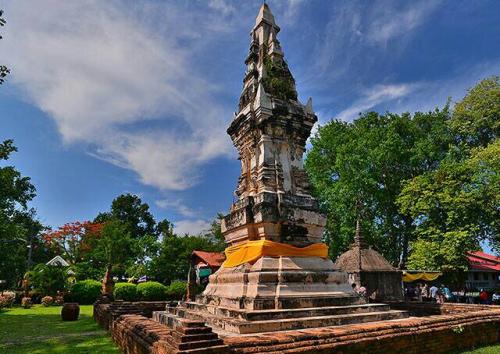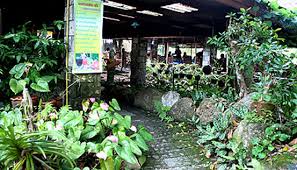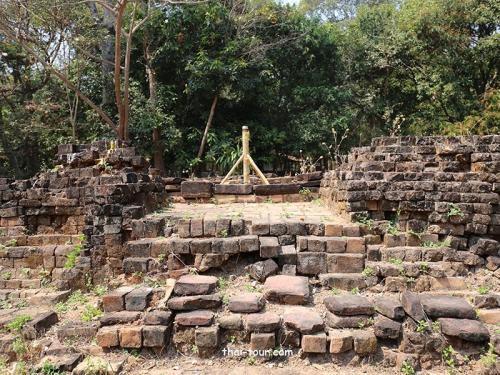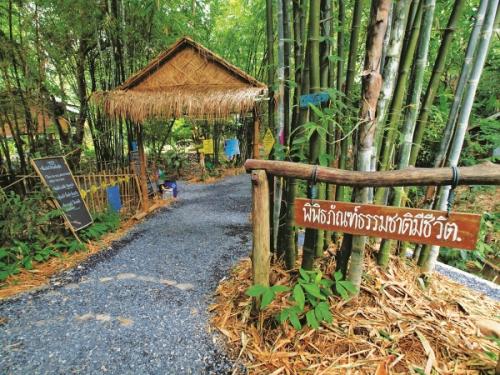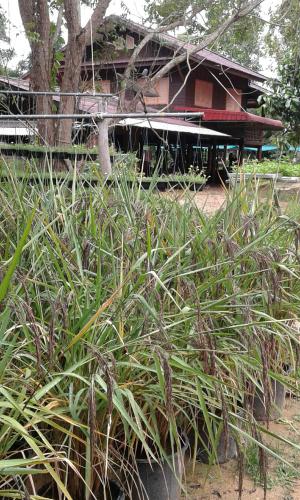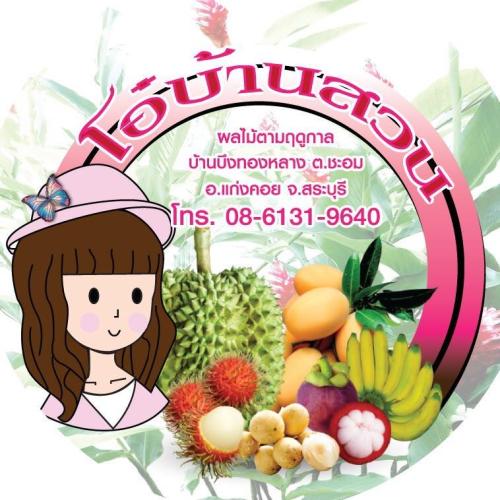Weather

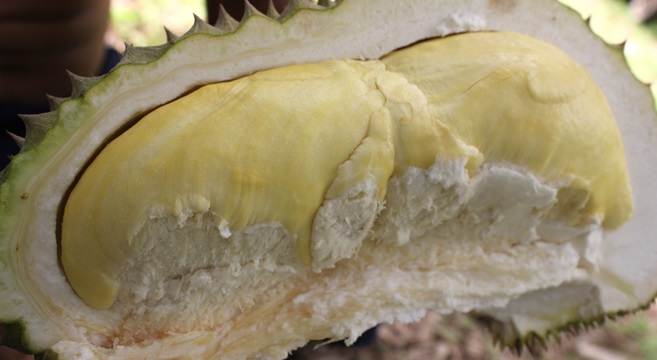
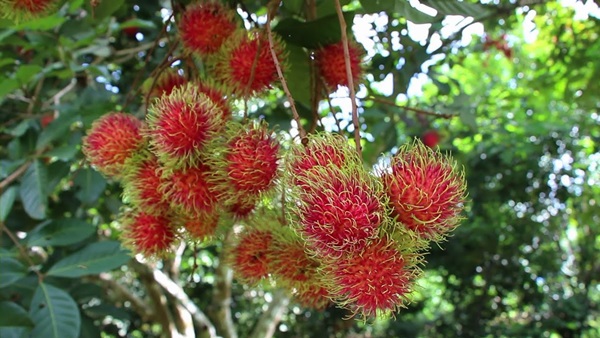
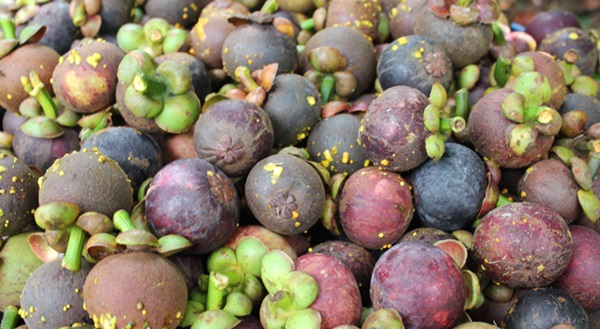
Open
Business hours
• Sunday
: 09:00 - 16:00
• Monday
: 09:00 - 16:00
• Tuesday
: 09:00 - 16:00
• Wednesday
: 09:00 - 16:00
• Thursday
: 09:00 - 16:00
• Friday
: 09:00 - 16:00
• Saturday
: 09:00 - 16:00
Note
: -
Map
Review Score
0
Information
Suan Lamduan hosts a fruit buffet where you can eat unlimited fruits in the garden for 200 baht, including rambutan, durian, mangosteen, longkong, and most importantly, durian. The staffs of this garden provides good service and friendly to all customers.
Source
Thailand Tourism Directory
Recommended
Entrance fees
• Entrance fees: Non-fee
• Remark : -
Review (0)
Write Review
0
จาก 5.0
Availability
Value
Service
Relate Agritourism
Kud Kaloeb is a large natural water source with clear water to see the fish; it is located in Tambon Nong Ped and Tambon Nong Hin. Originally, it was just a water source that people used for farming and only catch fish for a living. But, now, Yasothon has developed it into a tourist attraction and recreation venue by adjusting the landscape to be beautiful. It is where the Songkran Festival of the province is held every year. There are people who always come to visit and relax on holidays.
The convenient travelling to Kud Kaloeb is, starting from Yasothon - Amnat Charoen Road at km 14 (Ban Khamkerd, notice that there will be watermelons for sale along the road), turn left into Ban Nong Ngong, go to Ban Nong Bok - Ban Non Sawat, you will reach Kut Kalieb. The distance is about 10 kilometers.
Yasothon
See, taste, shop, community products at Tha Kha Floating Market. (The floating market is held every Saturday. Sunday and public holidays and every day of the 2nd waning, 7th waning and 12th waning days)
- Take a paddle boat to see the nature along the canal Along the route of His Majesty King Rama V at Ban Kamnan Chan, an old Thai house. (Book before visiting Ban Kamnan Chan)
-Visit community activities Participate in activities based on various learning bases of the farm housewives group. Tha Kha Floating Market from the story of the coconut See the wisdom of making coconut sugar, including
- Harvesting coconut sugar from the tree
- Traditional way of simmering coconut sugar
- Add sweetness, learn how to make traditional sweets from Tha Kha coconut sugar
- Weaving coconut stalks Traditional wisdom of Tha Kha people
- Weaving with fresh coconut Weave them into hats, baskets, etc.
- Dukdik boat from coconut husks
Samut Songkhram
The agricultural tourism is run by the community. There are several activities which are riding tractor to the pier, rowing a boat, seeing the pomelo orchard, learning about planting, tasting the pomelo, eating the local food, watching the shows ,and homestay.
Travel Programs
1. 1 day costs 350 baht per person: welcoming tourists, riding a tractor, riding a boat, enjoying the nature, visiting pomelo orchard, having meals, buying orchard products, sending tourists back
2. 2 days 1 night costs 990 baht per person:
The first day: welcoming tourists, guiding to the agricultural tourism learning center, having dinner at visitor reception center, attending the Bai Sri Su Kwan ceremony, watching the shows of local children, joining activities, and staying at homestay
The second day: having breakfast at visitor reception center, buying souvenirs, and sending tourists back
Other near attractions
1. Hat Nam Phrom - 5 kilometers far
2. Kaeng Tad Sai - 9 kilometers far
Chaiyaphum
It is a beautiful, shady fruit garden. The uniqueness of the taste of fruit, whether it is durian, rambutan, mangosteen and longkong, is why the owner of the garden has emphasized that this place has quality fruits. Its quality is at the GAP level by adopting a good quality farming system into production. The GAP system itself helps to increase the quality of productivity and safe for consumers, including the farmers themselves. Because the GAP system controls the use of chemicals to a level that is safe for consumers. Therefore, consumers or tourists can rest assured that they are safe and secure.
Rayong
Khung Bang Kachao is a part of the curved area of Chao Phraya River. Its shape is like a pig's stomach, covering wide areas of 6 sub-districts of Phra Pradaeng District, Samut Prakan Province. Including Bang Ka Chao, Bang Nam Phueng, Bang Ko Bua, Bang Krasao, Bang Yo, and Song Khanong, in which the area approximately is 19,200,000 square meters. On September 14th, 1977, a cabinet resolution was made to designate ""Khung Bang Ka Chao"" as the green area being suitable for cultivation without permission to construct buildings more than the regulative height. In 2006, Time magazine praised Bang Krachao as The best Urban Oasis of Asia, also known as the best lung among the urban in Asia. Even though many decades go by, this place is still considered as the ""lung"" to efficiently purify the air in Bangkok and Samut Prakan.
Agricultural activities in Khung Bang Kachao area will be a bike ride through the green space that is becoming a popular activity Because it is like an oasis that gives an oxygen for the city with the garden area around 320,000 square meters. There are many types of large trees and banyan roots covering with spectacular tree tunnels that make there shady and relaxing. There is also an interesting agricultural lifestyle and local wisdom, and stopover spaces to do the activity with farmers and community enterprise groups
Program tour
1. Visit the golden mango orchard (Nam Dok Mai Khung Bang Kachao, the latest Thai GI mango) by Lt. Col. Chamnan Onyam, the President of Golden Mango Producer Club in Samut Prakan, the President of Community Enterprise, Colonel Agriculture and the owner of the golden mango orchard in Khung Bang Kachao area. He becomes the expert to give an information and sell the product and scion.
2. Visit an ornamental plantation (Golden croton, Sealing-wax palm, and Cordyline) leading by Ajarn Narong Samleerat, the chairman of Learning Center for Enhancement of Agricultural Production, Phra Pradaeng District and Ajarn Somsak Samleerat, the agricultural philosopher. They become speakes to give an information and sell the trees.
3. Visit the integrated agricultural garden, Smart Farmer in Bang Kachao Subdistrict
4. Community enterprise for Health Sciences Activities, including massage with herbal compress, showing how to make herbal compress balls, and selling neck pillows, cereal belts, compresses, shoulder pillows and acupressure pillows.
5. Herbal Fragrant Incense House Community Enterprise with herbal incense making, tie-dye fabric making, and homestay service
Linked routes with other tourist attractions
(Every place is within Kung Bang Kachao. Phra Pradaeng District Samut Prakan Province)
- Bang Nam Phueng Floating Market, Bang Nam Phueng Subdistrict
- Sri Nakhon Khuean Khan Park and Botanical, Bang Kachao Subdistrict
- Siamese Fighthing Fish Gallery, Bang Kachao Subdistrict
- Bird Watching Tower, Bang Kachao Subdistrict
- Boat Museum, Bang Ko Bua Subdistrict
- Bangkachao vegetable warehouse
Community enterprise products
- Health Craft Community Enterprise, such as, neck pillows, cereal belts, compresses, shoulder pillows, and acupressure pillows
- Herbal Incense House Community Enterprise, such as, fragrant incense, and tie dye crafts (bags, clothes, and scarves)
- Coconut sugar
- Ornamental plants, such as Golden croton, Sealing-wax palm Cordyline, limes' scions, etc.
- Fruit trees, such as mangos, mangos' scions, limes, limes' scions, etc.
- Arts and crafts from community enterprises, such as auspicious wood from lucky stones, flowers from fish scales, and flowers from gossamer fabrics.
Samut Prakarn
Phra That Kong Khao Noi is located in the rice fields of Tambon Tat Thong; it is an old chedi in the Khmer period, built in the 23rd-25th Buddhist century, corresponding to the late Ayutthaya period. It is located in the area of Wat Phra That Kong Khao Noi which was originally just a rice field in Tambon Tat Thong
Phra That Kong Khao Noi is a brick and cement chedi. The shape is strange from the general pagoda is characterized as a rice hull. The Phra That is a rectangular chedi with three wooden indented corners. The square base is 2 meters wide on each side and raised about 1 meter in height. Next to this part is the top of the chedi, which is gradually approaching each other, while the outer peak of Phra That Kong Khao Noi is surrounded by a brick wall measuring 55 meters in size.
In addition, behind the relics there is a Buddha image made of bricks. The villagers regarded it as very sacred. And in the fifth month, people come to bathe the Buddha image and cover it with gold. It is believed that if this were not done, the rain would have dried up that year.
Also in the area of Ban Tad Thong, the Fine Arts Department has excavated the stories of prehistoric humans by discovering human skeletons in prehistoric times and painted utensils in Ban Chiang style
Yasothon
Ruen Phak Kut is the location of the Chang Klang Agricultural Tourism Club to be a coordinating center for agricultural tourist attractions and network of agricultural tourist attractions in the Chang Klang sub-district, there are meeting rooms, rooms and activity grounds.
Nakhon Si Thammarat
Dong Muang Toei is the old city of the Khmer period. No one knows when it has been an abandoned city for how long. The condition seen from many generations of great-grandparents; Dong Muang Toei has high forests with transparent in the bottom ground. There were some small trees and the big trees are rubber trees, tabaek trees, and Yang Hiang trees. It is a very dense forest. The parents and grandparents did not dare to cut down the trees in this grove because Dong Muang Toei has a fierce ghost called the Ghost of Grandfather. The forest is the habitat of monkeys and many birds. The marsh around Dong Muang Toei is a deep swamp with water all year round. It is a habitat and a natural breeding ground for fish. In addition to birds and this swamp is known to have the most turtles. The reason there are so many turtles, the villagers worship the spirits of their grandfathers. Grandfather forbids anyone to eat and destroy his animals, monkeys and turtles, and if they cause harm, they shall be punished accordingly.
Later, about 90 years ago, Song Puei villagers had a shaman who studied sorcery to perform a ceremony to defeat the ghosts of Muang Toei. This sorcerer's name is Elder Suwo. This incident coincides with the reign of Father Yai Agrahad. It was the eyes of the light when villagers near and far heard the news that Father Yai Suwo had defeated the Phi Dong Muang Toei. They flocked to catch fish turtles from Muang Toei for food until they almost cleared the swamp. So turtles are almost extinct until now. Father Yai Suwo has shared the swamp as a land for brothers and sisters to cultivate until today. As for Dong Muang Toei, the area has been divided into farming, gardening, and growing crops as much as today. This is true Elderly people who have reached 90 years of age, such as Father Yai, light scent, Father Big Bu Kokpuei, are still alive as witnesses.
Yasothon
There are no charges for visiting Bhumirak Dhamachart Centerm except if you come in groups and need to participate in the activities that the Center has arranged. Here is an excellent learning source, which provides you understanding of the meaning of the word “sufficient” and how to use resources to gain the most benefits and appreciate its value. The walk around this place is in a circle, starting from the Northern Zone to be excited with the planting of various types of bamboo in both ways as well as the prettiness of the bamboo bridge, the bamboo house near the lotus pond, and the bamboo toys. It is exhibited in this way so that we will know about the many benefits of bamboo, including the making of the water dripping trough for watering the trees and soil to replace people; walking up the small mountains to learn about the wild mountain; hydraulic ram pump is to use water to compress the water to the highland instead of using the water pump, wet fire break system, benefits of vetiver grass, and how to build the check dam. Then, walking though the Central Zone to learn about New Theory Agriculture for the farmers to gain benefits from their own land to its value; learning how to build the soiled house and many types of herbs. After that, walking though the Northeastern Zone to visit the rice bank; learning about the rice milling and how to raise the livestock, in which huge cows can be seen in the stalls; how to make compost for own use so that there is no need to buy chemical fertilizer, and learn about Hom Din, which is how to bring back to good soil for farming by covering the land. But how to do that? It is better to learning by yourself. Lastly, going into the Southern Zone to look at how to burn charcoal from bamboo; how to make Biodiesel, and learn about Kaem Ling Project. Moreover, throughout the Center, I have seen many big and small watercourses along the way. There are pools, agricultural beds to grow crops, Chai Phatthana Hydraulic Turbine, the growing of vetiver in water, and many other things. This is the end of the walk where we have received knowledge and enjoy an untiring walk. Walking around, looking, listening, and asking the officer relentlessly just because things that we think ‘we know’ become things we never knew before. This is because we are used to all these projects or theories but we have never practiced or actually touched.
How to travel: From Rangsit intersection, take the direction of Ong Kharak District. Head to use the route of Nakhon Nayok-Nang Rong Waterfall. Pass through Wang Takrai. Before reaching Nang Rong Waterfall for about 2 kilometers, turn right into Khun Dan Prakan Chon Dam Project. Go straight for about 3 kilometers until reaching the traffic circle (with the elephant statues). Go to the right to cross the bridge. When reaching the four-way intersection, turn right and go straight for 200 meters. The Center is on the left-hand side.
Nakhon Nayok
Sufficiency Economy Philosophy House is a learning center of the new agriculture theory. Inside the integrated garden, is planting vegetables for household consumption adhering to the sufficiency economy philosophy of King Rama IX. It is also the pilot model of growing rice berry in the 400 plastic tanks that results in the 20 tanks of paddy, which is sufficient for consumption all year round. Later, numbers of villagers and foreigners visit this place. The lecturer is available to provide knowledge about the SEP to the students and interested people.
Chumphon
Experience the local wisdom of the people in the community, and learn about Sufficiency Economy Philosophy.
Ubon Ratchathani
Seasonal fruit garden with fragrant durian, sweet rambutan and delicious mangosteen; affordable price, pay attention to every plant delivered directly to the customer
Saraburi


